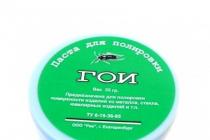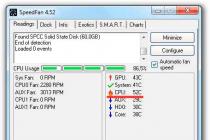Not every manufacturer in the catalog indicates starting currents on the lamps.
In the catalog of the SLICK.PRS ECO LED 45 5000K luminaire, the starting current is 35 A. The power of the luminaire is 42 W.
Recently on my channel youtube there was a video where I told, using an example, how I would perform working lighting. I was hoping that they would ask me, but what about the starting currents, won't the C6 machine work? For some reason, no one paid attention to this.
The fact is that now I will try to prove to you that the inrush currents LED lamps in most cases, you can ignore it.
When choosing a circuit breaker, it is important to know not only the operating current but also the starting current. But, even if you know the starting current, this does not mean that you can choose the right protective device. The duration of the starting current is very important.
Since, in the catalog, I did not find the duration of the inrush current, I asked the manufacturer a question.
On the same day, I received the answer:
As you can see, the starting current of this luminaire is only 3 μs. In my opinion, the duration of the starting current of all lamps will be approximately the same.
Let's do the math and base it all on numbers.
Estimated current of 50 luminaires: 0.2 * 50 = 10 A.
Starting current of one luminaire: 35 A.
Starting current of 50 luminaires: 50 * 35 = 1750 A.
Let's choose a circuit breaker with characteristic C16.
The ratio of the starting current to the rated current of the circuit breaker: 1750/16 = 110.
Let's determine how long a given starting current must be in order for the electromagnetic release of the C16 circuit breaker to trip.
I will round up in a big way, thus setting the groundwork for the strength of our calculation.

The graph shows that the inrush current should have a duration of approximately 0.005 s or 5 ms. And this is 100 times more (if you count 5 μs) than the duration of the inrush current of our LED lamp.
Now let's check if the machine will work if the current margin is only 20%.
Initial data: 40 lamps.
Rated current of one luminaire: 0.2 A.
Estimated current of 40 luminaires: 0.2 * 40 = 8 A.
Starting current of one luminaire: 35A.
Starting current of 40 luminaires: 35 * 40 = 1400 A.
Let's choose a circuit breaker with characteristic C10.
The ratio of the starting current to the rated current of the circuit breaker: 1400/10 = 140.
In principle, the same schedule is applicable to this option: the starting current must be 0.005 s for the machine to work.
Output: when choosing LED luminaires, inrush currents practically do not affect the choice of the rated current of the circuit breaker, if the characteristic of the circuit breaker is "C", and the current margin is at least 20%. I advise you to provide a 20-40% supply of a circuit breaker for LED luminaires.
On lamps, I think there will still be an article or video on youtube, where I will tell you about some of the features and nuances that you need to know about when choosing lamps.
Circuit breaker - This is a protective automatic device designed to disconnect short-circuit currents and disconnect in case of overcurrent.
Based on this description, we understand that the circuit breaker provides two types of protection, and it is very important to know and understand that the circuit breaker is designed to protect the wiring. Think for yourself, with a short circuit, current which flows in the wires can reach from 1000A to 10,000 A. And it is clear that at such currents, no cable will last long. A cable with a cross section of 2.5 square millimeters, which are often used for apartment wiring, will burn like a sparkler at such currents. And it’s not surprising if this leads to a fire.
The second protection of the circuit breaker is the overload protection of the wires again.
And again, it is very important to remember that it is the wiring that is protected. Since when too much load current flows through the wire, at least two or three times the rated one, the wire will get very hot, and in the end the insulation may melt and a short circuit will occur. Well, that is, of course, if there is no fire before that.
So we have decided on the importance of using the correctly selected circuit breaker, and now I suggest you go directly to the consideration of the selection criteria for circuit breakers.
Choice of circuit breaker rating
At , the first thing you need to pay attention to, and in general, let's say, to know in advance before going to buy is the nominal value of the circuit breaker. That is current which will normally flow through this circuit breaker. And when the rated current is exceeded, the machine will turn off.
The current that will turn off the switch must be selected for reasons of common sense. That is, if, for example, you have old wiring through which you can pass a current of up to 10A, and the expected load will be, say, about 20A, then you need to choose a circuit breaker from the condition of ensuring the safety of the wiring, that is, choose the machine closest to 10 A.
It also follows from this that periodically you will have to change the wiring, since with an increase in the number of electricity consumers, the load also increases. And over time, the old wiring is simply not able to provide the flow of such a large current.
Electrical wiring is exactly the case in which it is appropriate to say: "The miser pays twice." Therefore, if you are replacing electrical wiring, choose a wire cross-section with a margin.
Selection of the class of the circuit breaker.
You probably know about such a phenomenon as inrush currents.
Starting currents- this is the current that flows at the moment of turning on any consumer of electricity, and this current can exceed the rated current from 3 to 12 times. It is clear that different consumers have their own starting currents.
So, in order for the circuit breaker not to operate on inrush currents, as on short-circuit currents, there is such a thing as a class of a circuit breaker.
The class of the circuit breaker is indicated by a letter next to the number indicating its rated current.
Let's look at what classes there are:
B- withstands starting currents 3-5 times higher than the rated one.
WITH- withstands starting currents 5-10 times higher than the rated one.
D- withstands starting currents 10-12 times higher than the rated one.
So the most commonly used in everyday life are automatic switches with class B, and C.
Selection of the selectivity of the circuit breaker.
Selectivity - this is the property of protective automatics to disconnect only damaged sections of the electrical circuit. And to ensure this property, it is necessary to correctly select both the rating and the class of the circuit breaker.
To achieve tripping selectivity, the rating of the input circuit breaker must exceed the ratings of all circuit breakers per group. And correspond to the maximum permissible load that the supply wire and the wiring of the apartment can withstand.
Circuit breakers groups are selected already by the current that will flow through them.
Thus, in the event of a short circuit, say, in one of the outlets, only the circuit breaker of the outlet group will turn off, and not the input circuit breaker.
Short circuit currents
The same for selection of circuit breaker its breaking capacity should also be taken into account. Indeed, at high short-circuit currents, the machine may simply not be able to open the contacts. This phenomenon is also called sticking contacts.
Therefore, when choosing a circuit breaker, it is best to choose an automatic machine that can cut off currents up to 3 - 4.5 thousand amperes. They will cost more, but consider this an investment in your own safety. After all, imagine what happens if your circuit breaker simply cannot, due to circumstances, turn off the short circuit ...
Selection of the manufacturer of the circuit breaker.
As for the choice of the manufacturer, many people are often interested in which country it was made in, but this is not entirely the right approach, since the components are made in different places, and even bought from other manufacturers. Therefore, at choice it is better for the manufacturer to trust the brand or the advice of the seller, after all, the seller has good purchase statistics, and knows what circuit breakers more often buy, and less often make claims.
Modular circuit breakers are used to protect low-current and signal circuits against overloads and short circuits. They are made one-, two-, three- and four-pole, installed on DIN rails in switchboards. In everyday life, they actually play the role of automatic traffic jams.
Parameters for the selection of modular circuit breakers
The price for modular AB depends on the design, dimensions and technical parameters.
Rated voltage. Depends on the insulation resistance of the housing material.
Rated current. Should slightly exceed the rated load current. With an extra "reserve", the machine will not work at the moment of overload. The calculation is also done taking into account the cross-section of the conductors. The thin wire is heating up. If In of the switch is greater than the allowable I for conductors, they will burn out, but the machine will not knock out.
Breaking capacity. This is the highest short-circuit overcurrent at which the circuit breaker will open the circuit without being destroyed. The higher the indicator, the better, but the prices for "automatic plugs" with high breaking capacity are quite high.
Time-current characteristics of operation. The starting currents of the equipment under the influence of transient processes are much higher than the rated ones. So that the machines do not work with a short-term action of the starting current, they are made of several types:
B. Only for active loads (lamps, electric ovens, irons);
C. For home and offices (refrigerators, washing machines, computers);
D. For networks with significant reactive load (powerful electric motors).
Buy modular circuit breakers by affordable price you are offered by the online store "ABC-electro". On the site you can familiarize yourself with the catalog, which indicates the actual cost of the goods, and place an order. If you have any questions about the assortment or delivery terms, our managers will promptly answer them by calling the hotline.
Our company "Yug-Service" (Rostov-on-Don) is engaged in wholesale and retail supplies of various products related to LED lighting. In the catalog you will find automatic switches from the Italian brand Legrand, as well as miniature voltage surge protection modules. Automatic machines (type C) differ in current strength - from 10 to 63 Amperes. The protection modules are designed for voltages up to 1.2 kV.
Surge protection switches
We have presented Legrand MCB circuit breakers (type C) in six versions: 10 A, 16 A, 25 A, 32 A, 40 A and 63 A. These devices provide reliable protection of electrical equipment from voltage surges, overloads on the line and other emerging problems. ... In addition, circuit breakers (type C) provide effective protection against high voltages.
Protection modules are manufactured in South Korea and are designed for lighting technology. They protect lamps of various types from voltage surges. The maximum lamp power is 15 W.
Modules and circuit breakers type C
Our company sells Italian automatic switches (type C) only in bulk, modules - retail sale is possible, wholesale starts from 10 units. Products and services High Quality, from trusted manufacturers, is offered at very competitive prices. Detailed description products posted on the site, you can also consult our employees. They are excellently versed in the range and are always ready to help you make your choice and purchase the best electrical equipment. We work throughout the Russian Federation, we also supply goods to the CIS countries.














